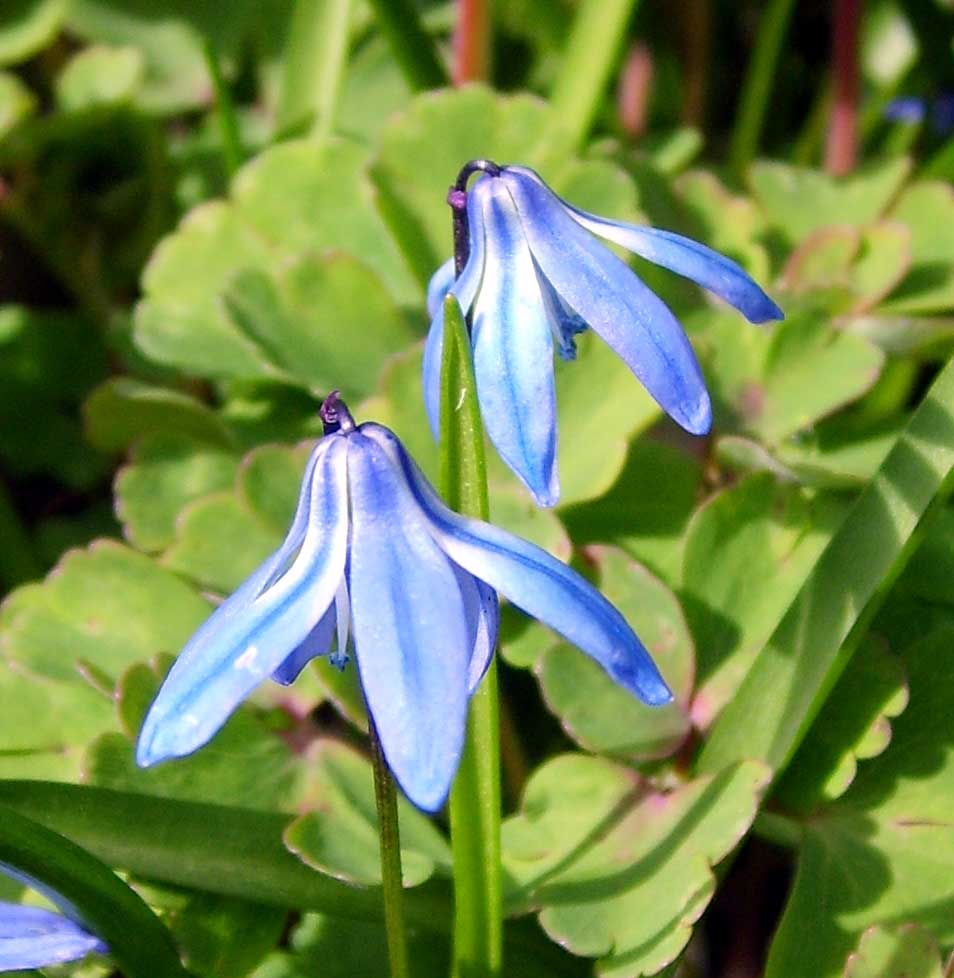Scilla Siberica – Siberian Squill
Scilla Siberica is a very pretty small spring flower. The squill flowers look like little bright blue stars.

Siberian Squill is native to Siberia, as the name implies. This plant is a member of the Haycinthaceae family.
Scillas grow quickly and grow often in substantial clusters, covering wide areas. They are popular garden flowers, but they also often grow wild.
They bloom in February and March together with the
snowdrop flower,
the
winter aconite,
the
primrose flower,
the
daffodil flower,
crocus flowers,
pansy flowers
and
tulip flowers.
The scilla flower often gets confused with the
glory of the snow flower (Chionodoxa luciliae),
another early blooming blue flower. They look indeed very similar. Yet, they can easily told apart: scilla flowers face downward, glory of the snows face upward, have a white centre and the blue colour is paler.
Planting Scilla Bulbs
First, choose a location. Plant the bulbs in fall about one month before the first frost. Place the bulbs a couple of centimetres deep in the earth and always place several bulbs together. Cover them with soil and wait until spring…
Scillas naturalize well and every year you can enjoy your spring garden with a growing carpet of scillas.
Tip: plant them together with red tulips, yellow daffodil flowers and white snowdrops to have a nice contrast in your garden.
Return from Scilla Siberica to the Plant and Flower Guide